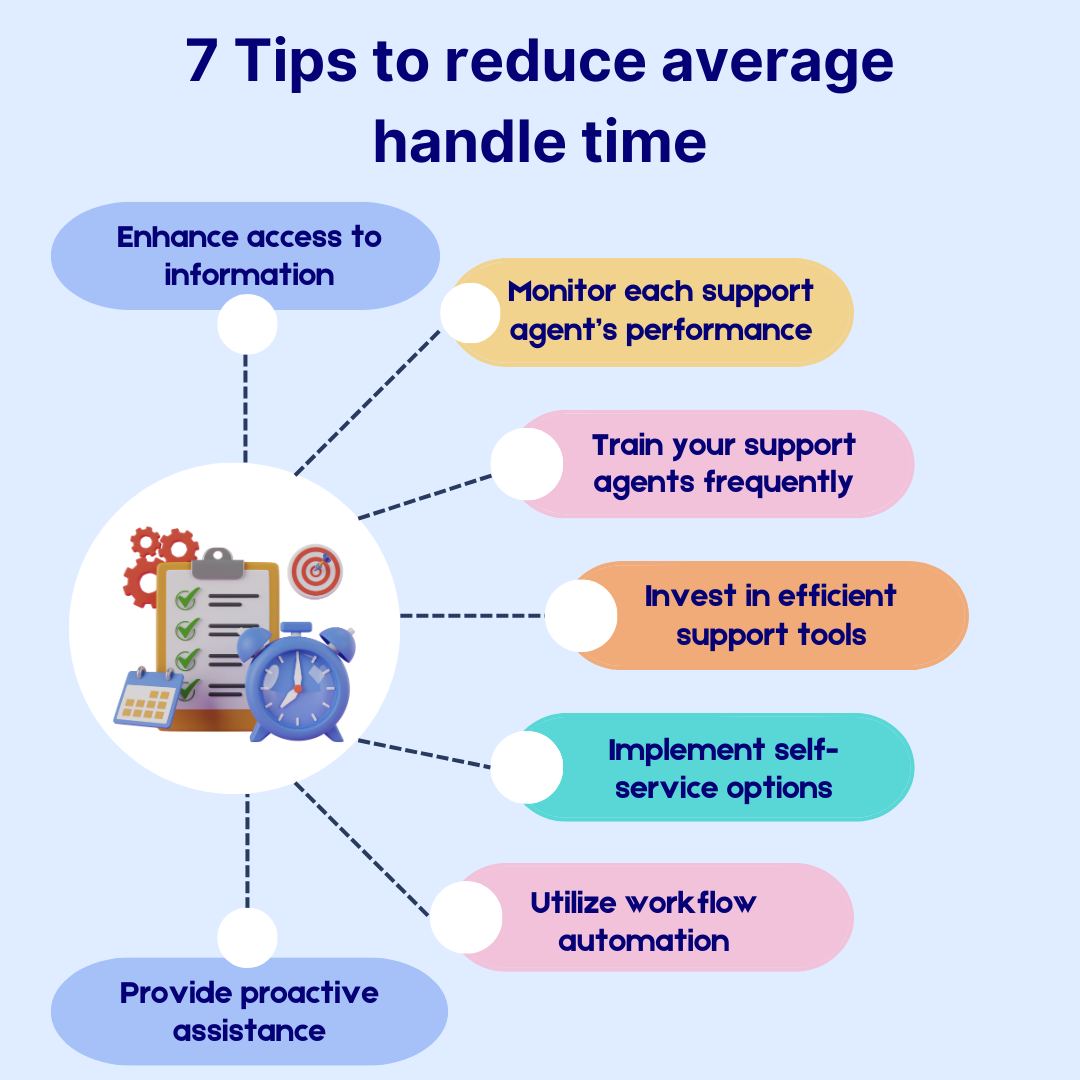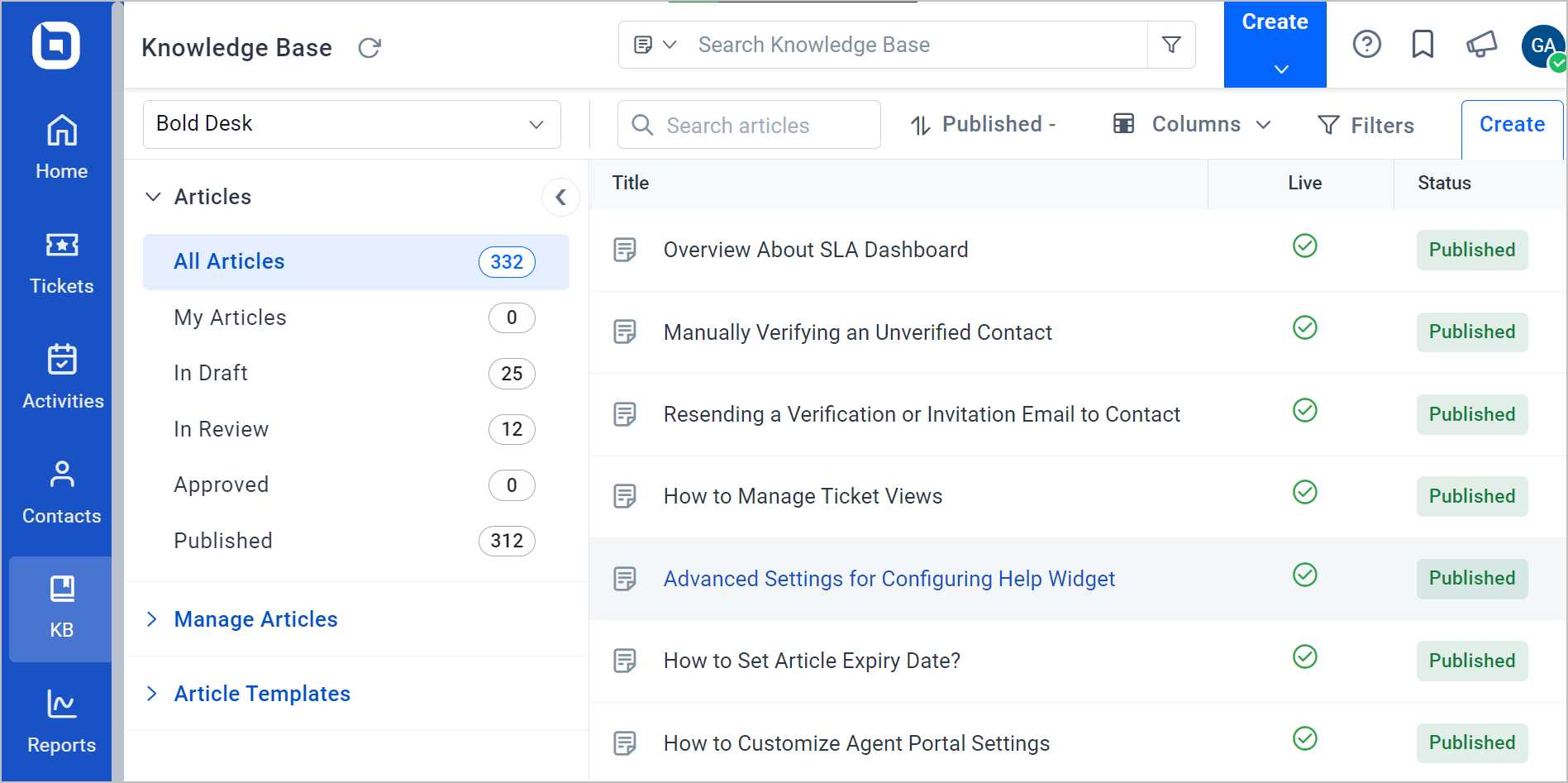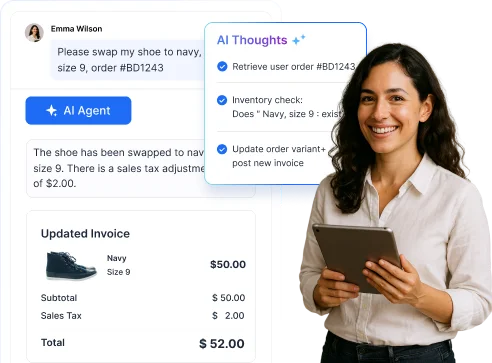Customers are increasingly drawn to companies that can quickly and effectively handle their issues or queries. In a world where time is of the essence and patience wears thin, the speed at which a business responds to its clients can make or break its reputation.
Therefore, businesses need to evaluate their support team’s ability to handle its workload efficiently. One way to do this is to measure the average handle time.
In this blog, we will discuss what average handle time is, how to calculate it, and tips to reduce it.
What does average handle time mean?
Average handle time (AHT) is a metric used in customer service departments that measures the average time it takes for a support agent to handle customer issues or resolve tickets.
It takes into account all the time spent on an issue, not just the time spent actively talking to customers. It includes the time customers are on hold and the time agents spend working on the issue outside of support calls.
A lower AHT indicates a knowledgeable and well-prepared staff capable of promptly addressing customer issues, while a higher AHT indicates the need for additional training to close knowledge gaps or, at worst, deficiencies in the product.
AHT is employed to assess the effectiveness and productivity of customer support agents and the overall success of a customer service team.
What is a good average handle time?
A good AHT varies depending on the company, customer interaction methods, the complexity of issues to be resolved, the products or services offered, and the company’s perception of a satisfactory customer experience.
Other factors that determine a good AHT includes:
- The size of the business
- The unique challenges of the industry
- The business’s customer service strategy
How to calculate average handle time
AHT is determined for each communication channel offered by a business due to the complexity and interaction dynamics involved in delivering support.
For example, the AHT for phone support is calculated as follows:

In the previous equation, the:
- Total talk time refers to the combined durations of the agent actively conversing with the customer in a call.
- Total hold time is the total time a customer is placed on hold across all conversations regarding the issue.
- Total after-call work time is the total time agents spend on tasks associated with a call, such as updating records or documentation.
- Total calls handled is the number of customer support calls, encompassing both incoming and outgoing calls.
The following table lists the AHT formulas for other communication channels:
| Communication channel | AHT formula |
| AHT = Total time from issue start to resolution / Total number of emails | |
| Live Chat | AHT = Total time from chat start to issue resolution / Total number of chats |
AHT example
If a support agent had 5 phone calls from customers and spent a total of 20 minutes talking to them, put them on hold for a total of 5 minutes, and took a total of 5 minutes to follow up, then the average handle time would be:
(20 minutes + 5 minutes + 5 minutes) / 5 calls = 6 minutes per call
7 Tips to reduce average handle time
Every client wishes for the issue they present to the support agents for resolution to be handled in the shortest time possible. The following are some ways a company can reduce its average handle time to improve the customer experience:

Enhance access to information
This involves ensuring that your agents have easy access to all the information they need to resolve a customer’s issue.
Providing quick and easy access to comprehensive information can be done with the help of:
- Knowledge bases
- Contact management systems
- Customer histories
- Product details
These reduce the time agents spend searching for relevant data during customer interactions, leading to a shorter AHT.
Monitor each support agent’s performance
This average handle time tip involves carefully keeping track of each support agents AHT to know how fast and efficient they are at providing necessary responses and resolutions to customers.
Support agent performance can be monitored using the following the metrics:
- Hold time
- Talk time
- Number of transfers
- Number of missed calls
By watching each support agent’s performance, you can identify and address their weaknesses to improve their AHT.
Train your support agents frequently
Regular training sessions keep your support agents up to date with the latest product or service information and support techniques, leading to a reduction in AHT as they are able address issues accurately and promptly.

Invest in efficient support tools
Provide agents with advanced and user-friendly support tools, such as:
- Internal help desk service software: Enhances customer interactions by providing a comprehensive platform for addressing queries and resolving issues. It often includes a ticketing system, knowledge base, automation features, and customization options, enabling businesses to offer prompt and efficient support.
- Contact management software: Helps businesses manage customer relationships by providing instant access to relevant customer data so that agents can tailor interactions to customer needs, preferences, and expectations.
- Omnichannel communication: Integrates communication channels like email and social media into a unified system. This enables consistent and seamless communication, allowing businesses to engage with customers on their preferred platforms and in their preferred languages to maintain a cohesive experience.
With the aid of these tools, agents can effortlessly manage customer interactions, which improves efficiency in the resolution process and lowers AHT.
Implement self-service options
Implementing self-service options can effectively reduce average handling time by allowing customers to handle simple issues on their own.
This can be done by providing the following resources to handle common and repetitive customer queries:
- Frequently asked questions (FAQs)
- Community forum
- Knowledge base

According to Higher Logic, 77% of customers have a more favorable perception of organizations that provide self-service options to assist customers seeking support.
By encouraging self-help, routine questions can be resolved without customers needing to interact with an agent, resulting in a decrease in AHT as support agents can focus on more complex issues.
Utilize workflow automation
With the right help desk software, you can automate repetitive tasks and workflow processes, expedite issue resolution and allow agents to focus on more intricate aspects of customer interactions. Automation can be used in several different forms:
- Canned responses: For frequently asked customer questions, canned responses can be used to allow customer support agents to respond quickly and consistently, reducing time spent on each customer interaction.
- Follow-up actions: Certain follow-up tasks, such as sending updates, email notifications, reminders, and alerts to customers can be automated by defining a service-level agreement (SLA) and enforcing it with your customer support software. This keeps agents from missing support deadlines, decreases overall handle time, and allows agents to focus on the next customer.
Provide proactive assistance
Companies can improve service efficiency and customer satisfaction by being proactive in customer support.
This involves anticipating needs and resolving issues before they become larger problems. By addressing potential issues ahead of time, the number of inquiries decreases and issues are resolved quicker. This leads to decreased AHT and increased customer loyalty and trust.
Why is average handling time important?
When a company strives for an excellent AHT, it enjoys the following outcomes:
Increased customer satisfaction
Customers appreciate having their issues resolved in a timely manner. In Time To Win: The Consumer Patience Study, customer experience expert Jay Baer found that 62% of customers feel disappointed when a business responds slower than they expect.
Therefore, extending waiting periods and rushing customer interactions just to reduce AHT are likely to result in customer dissatisfaction, potentially leading customers to consider switching to a competitor.

A well-managed average handling time is crucial. It demonstrates to customers that their satisfaction is at the heart of the company’s customer service ethos, setting the stage for a successful, long-term customer relationship.
Improved customer service team efficiency
AHT helps determine how efficiently customer inquiries are handled by the support team. A lower AHT indicates that agents are resolving issues quickly, leading to more customers being served in less time.
By monitoring AHT, companies can identify opportunities to streamline processes and offer better support agent training. This can lead to cost savings for the organization.
Better allocation of resources
Understanding AHT can assist in the allocation of resources, management of the workforce, and the creation of appropriate customer support schedules.
Observing AHT and its contributing factors ensure that the correct number of agents is present at all times, avoiding the issue of excessive or insufficient staff. Such measures directly influence service levels and operational expenses.
Improved customer experience
Improving the quality of customer interactions is a crucial aspect of reducing average handling time for businesses.
According to Salesforce, 89% of customer are willing to make another purchase after a positive customer service experience.
When customers consistently have positive experiences, they are more likely to become loyal to the brand and may even recommend the company to others.
Therefore, it is important to minimize hold time, reduce post-call work time, and resolve issues quickly. All of these lower AHT and result in an enhanced customer experience.
Accurate evaluation of agent performance
AHT is just one tool that businesses can use to evaluate the promptness and effectiveness of their support agents in resolving inquiries.
AHT can be determined for the entire team or an individual agent. It serves as a useful starting point for defining future training goals and identifying areas for improvement.
Combine quality with speed to reduce average handle time
To improve customer service, organizations need to measure AHT because it provides critical insight into support efficiency, customer satisfaction, and business performance.
Optimizing average handle time supports operational objectives and a commitment to excellent service.
To provide better customer service and improve the customer experience, use BoldDesk. For a live demonstration or to discover the benefits BoldDesk can offer your support team, start a free trial. Please contact the BoldDesk support team if you have any questions.
Related articles



















 Email Ticketing System
Email Ticketing System Shared Inbox Software
Shared Inbox Software Multi Brand Help Desk
Multi Brand Help Desk Internal Help Desk Software
Internal Help Desk Software Trouble Ticketing Software
Trouble Ticketing Software Mobile Help Desk
Mobile Help Desk 
















